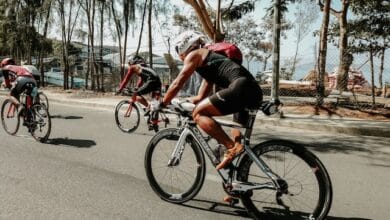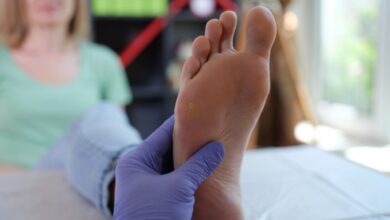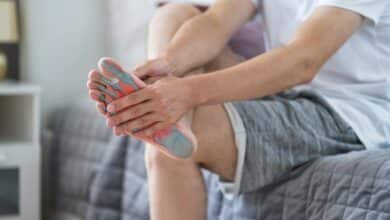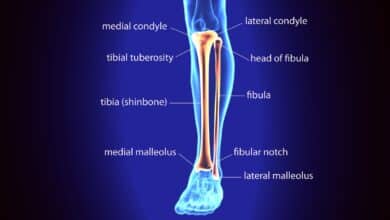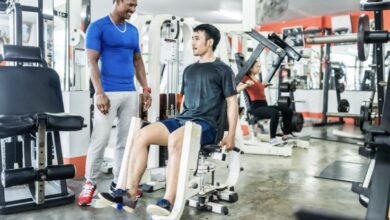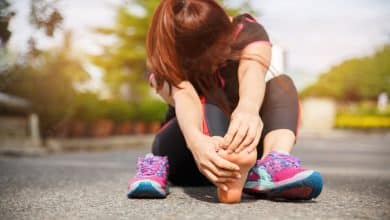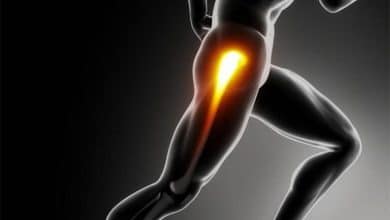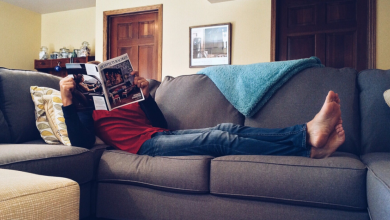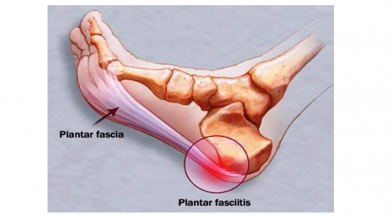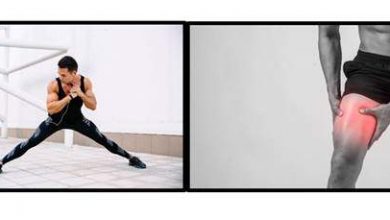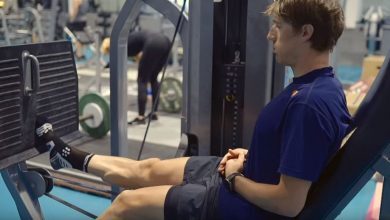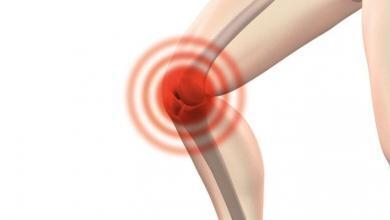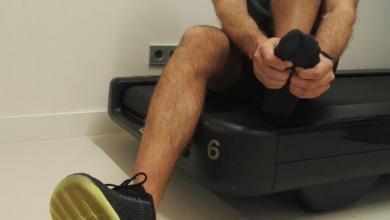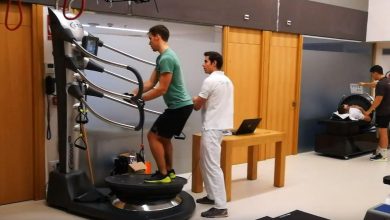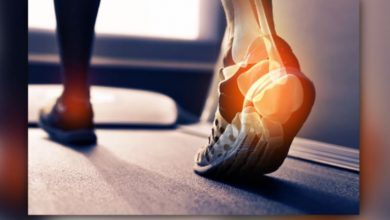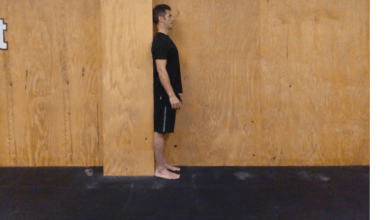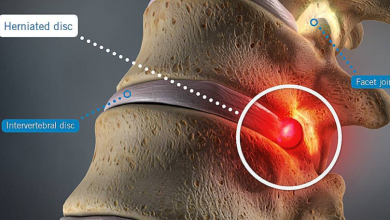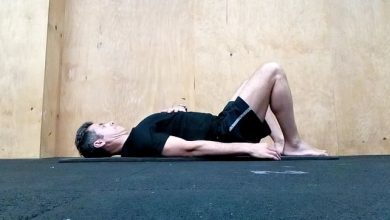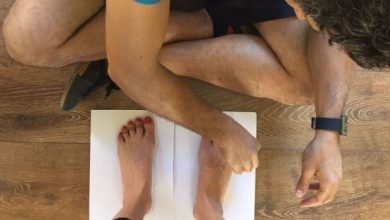Hip abduction: causes, symptoms and treatments
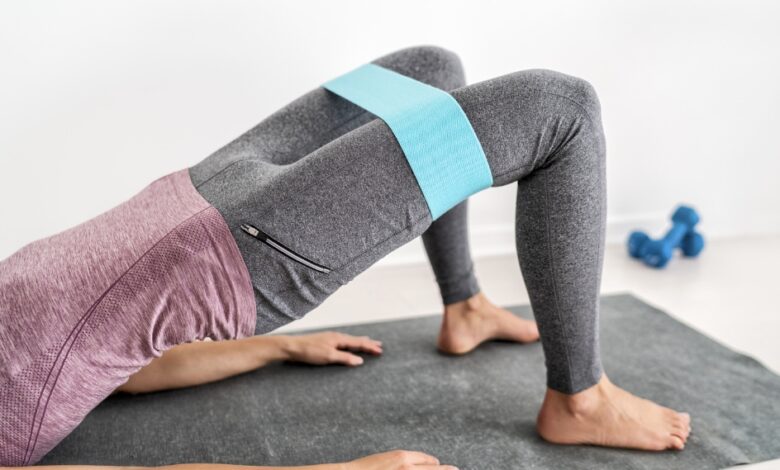
La hip abduction It is an important topic related to our health. The abductor muscles play a crucial role in the hip.
Strengthening them through specific exercises can prevent injuries and improve our daily mobility. It is essential to take care of routine movements to avoid imbalances, pain and injuries in hip abduction. Furthermore, the role of the fascia lata in hip mobility is relevant.
Specialized training and developing hip musculature can provide benefits for strengthening your knees. There are expert recommendations for maintaining a strong core in hip abduction.
Importance of hip abduction in our health
Hip abduction plays a fundamental role in our health and well-being. The abductor muscles, responsible for separating the hip from the body, are vital for performing everyday movements such as walking, running or lifting objects.
Having strong and functional hip abduction allows us to maintain good posture, improve stability and prevent injuries to the lumbar region and hip and knee joints.
- The abductor muscles are key to maintain a balanced and stable gait, avoiding deviations or imbalances.
- Un Proper strengthening of these muscles prevents aches and pains in the hip and lower back.
- By developing the strength of the abductor muscles, increases hip resistance, allowing you to carry out daily activities with greater ease and lower risk of injury.
It is essential to understand the importance of working on hip abduction in our exercise routine to maintain good musculoskeletal health and avoid long-term problems.
Through specific exercises and correct prevention, we can maintain a strong and stable hip, promoting a better quality of life.
Function of the abductor muscles in the hip
The abductor muscles play a critical role in hip stability and mobility.
These muscles, such as the gluteus medius and gluteus minimus, are located on the lateral part of the hip and are responsible for abducting the leg, that is, moving it away from the body.
The function of the abductor muscles goes beyond simply moving the leg away from the body. These muscles are essential for maintaining balance and stabilizing the pelvis during walking and other daily activities.
Additionally, they work in conjunction with the adductor muscles to ensure proper alignment and function of the hip.
- They allow hip stability during walking and running.
- They help prevent injuries and muscle imbalances in the hip and lower limb.
- They improve control of hip movements in different planes.
- They contribute to proper posture and pelvic alignment.
It is important to strengthen and maintain the abductor muscles in good condition to enjoy good hip functionality and prevent possible injuries.
Through specific hip abduction exercises, you can work and strengthen these muscles, thus improving your quality of life and avoiding future discomfort and problems.
Hip abduction exercises to strengthen muscles
To strengthen the hip abductor muscles, there are different exercises that you can incorporate into your training routine. These exercises will help you develop strength and stability in the hip area, thus improving your ability to perform abduction movements efficiently.
1. Lateral squats: Stand with your feet shoulder-width apart. Bend your knees and lower your body toward the floor, shifting your weight to one side. Return to the starting position and repeat the movement to the other side.
2. Side kicks with elastic band: Place an elastic band around your legs, just above the knees. Keeping your leg straight, perform a side kick outward, as if you were trying to separate your legs.
3. Lying Lateral Leg Raises: Lie on your side, with your legs together and straight. Lift your top leg up, keeping your body aligned. Descend slowly and repeat the exercise.
4. Hip abductions in quadruped position: Get into a quadruped position, with your hands and knees resting on the floor. Raise one leg to the side, keeping the knee bent. Return to the starting position and repeat with the other leg.
Remember to perform correct technique in each exercise and increase the difficulty progressively. If you experience pain or discomfort, it is important to stop exercising and consult a health professional.
Prevention and rehabilitation of hip abduction injuries
Prevention and readaptation of hip abduction injuries are key to maintaining the health and proper functioning of this joint.
Here are some strategies and tips that will help you in this process:
- Maintain correct posture when sitting and lifting heavy objects, thus avoiding overloading the hips.
- Perform stretching and warm-up exercises before practicing intense physical activities to prepare your hip abductor muscles.
- Strengthen the abductor muscles through specific exercises such as lateral leg raises or the use of elastic bands.
- Monitor and correct any muscle imbalance that may affect hip abduction, consulting a health professional or physical therapist.
- Avoid abrupt or sudden movements that could compromise hip stability, especially in impact sports activities.
Remember that prevention is essential to avoid hip abduction injuries, but if you suffer one, readaptation is equally important.
If you experience persistent pain or difficulty moving your hip, see a specialist for an accurate diagnosis and appropriate treatment plan.
Hip abduction in our daily lives: routine movements that we must take care of
In our daily lives, we perform a series of movements that involve hip abduction. These movements are essential for our mobility and proper functioning. It is important to pay attention to the way we perform these movements and take care of the health of our hips.
When getting up from a chair, avoiding crossing our legs while sitting, or when going up and down stairs, hip abduction plays a fundamental role.
These routine movements may seem simple, but if not performed correctly, they can cause muscle imbalances and increase the risk of injury.
- When getting up from a chair, we must do so gradually and in a controlled manner, avoiding sudden movements that may strain the hip abductor muscles.
- Avoid crossing your legs while sitting, as this can limit the range of motion of the hip and put excessive pressure on the joints.
- When going up and down stairs, it is important to support your body weight on your leg muscles and not only on your hips. This helps maintain proper balance between different muscle groups.
Taking care of routine hip abduction movements will help us maintain good musculoskeletal health and prevent possible injuries. Let's make sure we perform these movements consciously and appropriately to preserve the correct functioning of our hip on a daily basis.
How to avoid imbalances, pain and injuries in hip abduction
To prevent imbalances, pain and injuries in hip abduction, it is essential to take certain measures and precautions. Here we show you some recommendations:
- Maintain proper posture when sitting, avoiding crossing your legs for long periods of time.
- Perform stretching and warm-up exercises before any physical activity.
- Strengthen your hip abductor muscles through specific exercises, such as side kicks and sumo squats.
- Avoid carrying excessive weights or adopting incorrect postures when lifting objects.
- Listen to your body and rest properly when you feel fatigue or discomfort in the hip area.
- Wear appropriate footwear and avoid walking or running on uneven surfaces that could cause impact on the hip.
- Consult a healthcare professional, such as a physical therapist or sports medicine specialist, for personalized guidance and recommendations.
Remember that each person is unique, so it is important to adapt these instructions to your personal situation and consult an expert in case of doubts or persistent discomfort. With proper care, you can maintain healthy hip abduction and prevent possible injuries in your daily life.
Role of the fascia lata in hip mobility
The fascia lata is a fibrous structure that covers the outer part of the thigh and plays a fundamental role in hip mobility. This fascia provides support and stability to the hip abductor muscles, helping them function efficiently and in a coordinated manner.
The fascia lata acts as an elastic band that transmits the force generated by the abductor muscles to the thigh bone, thus allowing the abduction movement of the hip.
Additionally, it helps maintain proper alignment of the hip joint and prevents muscle compensations or imbalances.
A healthy state of the fascia lata is crucial to ensure adequate hip mobility and prevent injury.
Regular stretching of this structure and strengthening the abductor muscles help maintain its optimal function.
It is important to keep in mind that any restriction or dysfunction in the fascia lata can negatively influence hip mobility, limiting abduction and causing discomfort.
For this reason, it is advisable to work comprehensively, including specific exercises for the fascia lata in hip training and rehabilitation programs.
Consulting health professionals specialized in hip mobility and function can be beneficial to receive a personalized and effective approach in the prevention and treatment of potential problems related to fascia lata and hip abduction.
Specialized training to strengthen the glutes and fascia in hip abduction
Strengthening the glutes and fascia is essential to improve hip abduction, providing stability and improving joint function.
Below, we present some specialized training recommendations:
- Specific exercises for the glutes: includes moves like side squats, glute kicks, and hip bridges, which activate and strengthen the gluteal muscles.
- Fascia lata stretches: Practice specific stretches that help maintain the flexibility and elasticity of the fascia lata, such as the piriformis stretch.
- Resistance exercises: Use resistance bands to add intensity and challenge to your hip abduction workouts. Resistance exercises will strengthen the abductor muscles and improve joint stability.
- Functional integration: includes exercises that mimic movements and movement patterns of daily life, such as side walking, lateral shifts, and squatting exercises.
Remember that it is always important to consult a health professional or specialized trainer before starting any training program. They will be able to adapt the exercises to your needs and avoid possible injuries.
Benefits of developing hip muscles and strengthening the knees
Strengthening the hip and knee muscles brings numerous benefits to our health and well-being. Below we highlight some key advantages:
- Improved stability and balance: Strengthening the hip muscles helps increase body stability, which in turn reduces the risk of falls and injuries.
- Injury prevention: By strengthening your knees and hip muscles, you reduce your chances of common injuries such as sprains and tears.
- Increased mobility: Developing hip muscles improves the flexibility and range of motion of our joints, allowing us to carry out daily activities with greater ease.
- Improved sports performance: Strong and stable hip and knee muscles are essential for proper performance in any physical activity, both in sports and training.
- Pain reduction: By strengthening your hip muscles, you can reduce pressure and stress on your knees, which can relieve pain associated with different conditions, such as osteoarthritis.
Expert recommendations for maintaining a strong and stable base in hip abduction.
Health and prevention experts highlight the importance of maintaining a solid and stable base in hip abduction. Here we present some recommendations to achieve this:
- Perform specific strengthening exercises of the hip abductor muscles, such as lateral leg raises or resistance exercises with elastic bands.
- Includes hip mobility exercises in your training routine, such as hip stretches or hip rotation exercises.
- Maintain a correct posture in your daily activities, avoiding hunching your back and keeping your abdominal and gluteal muscles activated.
- Run the controlled hip abduction movements and conscious, avoiding excess speed or force that could cause injuries.
- Perform knee muscle strengthening exercises to complement hip stability.
- Consult with a prevention specialist or personal trainer to receive a personalized evaluation of your hip abduction and obtain specific recommendations for your case.
By following these recommendations, you will be able to strengthen your hip abductor muscles, improve your stability and prevent possible injuries.
Remember that each person is different, so it is important to adapt the exercises to your individual needs and abilities.
Prevention and readaptation of muscle injuries in lower limbs
The prevention and readaptation of muscle injuries in the lower limbs is essential to maintain good health and avoid possible complications. Here we offer you some tips and recommendations to help you in this process:
- Perform a proper warm-up before any physical activity. These preparatory exercises will help improve blood circulation and prevent possible injuries.
- Incorporate muscle strengthening into your training routine. This includes specific work for the hip muscles, such as hip abduction, which will help maintain good stability and prevent problems in this area.
- Listen to your body and don't overexert yourself. If you feel any pain or discomfort during physical activity, it is important to stop and consult a rehabilitation specialist who can offer you adequate rehabilitation.
- Take care of your diet and maintain good hydration. A balanced diet and correct fluid intake will help improve recovery and avoid possible complications.
- Make sure you get enough rest. Rest is essential to allow muscles to repair and strengthen after physical activity.
Always remember to consult a health professional before starting any exercise or rehabilitation program, so that they can evaluate your specific situation and recommend the best prevention and readaptation strategies for muscle injuries in the lower limbs.
Importance of the abductor muscles in the knee according to prevention specialists
The abductor muscles play a fundamental role in the functionality of the knee, according to prevention specialists.
These muscles are responsible for stabilizing and supporting the knee joint during abduction movements, that is, when we bring the leg away from the body.
By strengthening the abductor muscles, you reduce the risk of knee injuries and improve your ability to perform more efficient and stable movements.
Additionally, strong abductor muscles help maintain balance and proper hip alignment, which also benefits knee health.
How to strengthen the knee abductor muscles?
- Perform specific hip abduction exercises, such as lateral leg raises.
- Incorporate resistance exercises, such as using elastic bands or weights.
- Add activities that involve lateral movement, such as dancing or skating.
- Perform appropriate stretches to maintain muscle flexibility.
It is important to keep in mind that before starting any exercise program, it is advisable to consult with a health professional or a physiotherapist, to receive a personalized evaluation and guarantee correct execution of the exercises.
Exercise and neuroscience: understanding hip abduction movements
Exercise and neuroscience play a fundamental role in understanding hip abduction movements.
Scientific studies have shown that regular practice of hip abduction exercises can improve the connection between the nervous system and the muscles involved in this movement.
Neuroscience has allowed us to understand how sensory information is processed in the brain and translated into coordinated hip movements.
In addition, this science has revealed the importance of neuronal plasticity, that is, the nervous system's ability to adapt and change as we learn and exercise.
By performing hip abduction exercises properly, we stimulate the production of key neurotransmitters, such as dopamine and serotonin, which are related to well-being and movement regulation.
This helps strengthen the connection between the brain and muscles, allowing you to perform hip abduction movements more efficiently.
- El strength training and specific resistance for the hip abductor muscles can enhance the recruitment of muscle fibers and improve neuromuscular coordination.
- Regular practice of balance and stability exercises helps stabilize the hip joint and optimize the function of the abductor muscles.
Hip mobility exercises recommended by specialists
Hip care specialists recommend a series of mobility exercises that can help improve and maintain good health in this area of the body. These exercises focus on strengthening the hip muscles, reducing stiffness, and improving flexibility.
Below, we present some exercises recommended by specialists:
- Side leg raises: Lying on your side, lift your leg toward the ceiling and then gently lower it. Repeat this movement several times.
- side step: Take lateral steps while maintaining an upright posture, keeping your knees slightly bent and your feet parallel. Take several steps to the side and then return to the starting point.
- Hip bridge: Lying on your back, bend your knees and place your feet flat on the floor. Raise your hips toward the ceiling, hold for a few seconds, then lower yourself slowly. Repeat this exercise several times.
- Side lunges: Standing, take a side step and bend your knee to one side, keeping the other leg straight and your torso upright. Return to the starting position and repeat the movement with the other leg.
Remember that before performing any exercise, it is important to consult with a health professional or a specialized trainer to make sure that the exercises are adapted to your needs and physical conditions.
Personalized training to strengthen hip abduction
Personalized training is key to strengthening the muscles involved in hip abduction.
To achieve effective results, it is important to adapt the exercises to individual needs and abilities. Below are some recommendations for training focused on strengthening this area:
- Includes specific exercises: To strengthen hip abduction, it is advisable to incorporate movements such as the Lateral Walk, the Hip Abduction Machine and the Side-Lying Leg Raises. These exercises focus on working the abductor muscles and help improve stability and balance in this area.
- Gradually increase the intensity: It is important to start with appropriate intensity levels and progressively increase as strength and endurance are acquired. This guarantees safe and effective training, avoiding possible injuries.
- Combine strength and stability exercises: In addition to strength exercises to develop abductor muscles, it is beneficial to include stability exercises, such as the Single Leg Balance or the Bosu Ball Squat. These exercises strengthen the stabilizing muscles and improve coordination in hip abduction.
- Maintain good technique: It is essential to perform the exercises with proper technique to maximize the benefits and prevent injuries. If you have doubts about the correct execution of an exercise, it is advisable to seek advice from a qualified professional.
- Listen to your body: During training, it is important to pay attention to the signals that the body sends us. If you experience pain or discomfort, it is necessary to stop and consult a specialist. Listening to the body allows us to adapt training according to our needs.
Remember that consistency and discipline are key to achieving lasting results in strengthening hip abduction.
With a personalized training plan and the right approach, you can increase strength and stability in this area, thereby improving your performance and quality of life.
Prevention and rehabilitation of hip injuries according to specialists
Prevention and rehabilitation specialists have developed effective strategies to prevent and treat hip injuries. Its focus is based on strengthening muscles, improving mobility and correcting imbalances in the area.
To prevent injuries, It is essential to perform warm-up exercises before any intense physical activity. In addition, it is recommended to carry out a specific training program that strengthens the abductor muscles and stabilizes the hip.
In case of hip injuries, rehabilitation specialists will design a individualized treatment plan. This plan will include rehabilitation exercises that will help reduce pain, regain mobility and strengthen the muscles in the affected area.
In addition, specialists will also be able to use manual therapy techniques, such as massages and stretches, to relieve tension and improve hip flexibility. Likewise, they could recommend the use of assistive devices, such as splints or supports, to facilitate recovery and prevent new injuries.
- Perform warm-up exercises before physical activity.
- Follow a training program to strengthen your hips.
- Receive an individualized treatment plan for hip injuries.
- Perform rehabilitation exercises recommended by specialists.
- Undergo manual therapy and use assistive devices as necessary.
Role of the abductor muscles in hip function and movements
The abductor muscles play a crucial role in hip function and movements. These muscles allow the hip to abduct, that is, move it away from the body. They play an important role in the stability of the pelvis and have a significant impact on our ability to walk, run, and perform other daily activities.
The main hip abductor muscles are the gluteus medius muscle and the gluteus minimus muscle. These muscles work together to stabilize the pelvis and allow lateral movement of the hip.
When these muscles are weakened or imbalanced, problems such as hip pain, instability, or difficulty performing activities that require proper hip abduction can arise.
It is essential to keep these muscles strong and flexible to ensure proper hip function. Some specific exercises to strengthen the abductor muscles include lateral leg raises, side kicks, and resisted side walking.
These exercises help strengthen and tone the abductor muscles, improving hip stability and reducing the risk of injury.
If you experience pain or lack of mobility in your hip, it is advisable to consult with a health professional, such as a physical therapist or doctor who specializes in musculoskeletal injuries. They will be able to evaluate your situation and offer you an appropriate treatment plan to strengthen and rehabilitate the hip abductor muscles, thus improving your quality of life and physical performance.
Fascia lata: importance in hip abduction
Fascia lata is a connective tissue that covers the hip and gluteal muscles, playing a crucial role in hip abduction. This structure provides support and stability during the movement of separating the leg from the body.
The fascia lata acts as an elastic band that helps control and guide the hip abduction movement. By contracting, the fascia lata helps maintain proper alignment and prevents uncomfortable movements or injuries to the joint.
Additionally, the fascia lata also plays a role in load distribution during walking and other daily movements. It contributes to hip stability by absorbing some of the stress and pressure generated when walking, running or performing physical activities.
A healthy fascia lata is essential for effective and discomfort-free hip abduction. Maintaining the flexibility and strength of this structure through specific stretches and exercises can help prevent injuries and improve performance in activities that involve lateral movements.
Hip mobility and strengthening exercises
There are numerous exercises that can help you improve mobility and strengthen your hip muscles. These exercises are recommended by experts in the field and can be performed from the comfort of your home or in a gym.
- Lateral leg raise: Lying on your side, lift one leg toward the ceiling and then slowly lower yourself down. Do it again with the other leg.
- Lateral walk with elastic band: Place an elastic band around your legs and walk sideways, maintaining the resistance of the band.
- One leg hip raise: Lying on your back, lift one leg and hip toward the ceiling, keeping the other leg extended. Slowly lower yourself down and repeat with the other leg.
- Glute Bridge: Lying on your back, bend your knees and lift your hips toward the ceiling, keeping your back straight.
- Lateral lunges: Step laterally with one leg, bending the knee and keeping the other leg straight. Return to the starting position and repeat with the other leg.
Remember to perform these exercises in a controlled manner, paying attention to your posture and avoiding sudden movements that could cause injuries. It is always advisable to consult a health professional or personal trainer before starting any exercise program.
Prevention and rehabilitation of hip injuries according to specialists.
Prevention and readaptation of hip injuries is essential to maintain good health and mobility in this joint.
Specialists on the subject highlight the importance of taking measures to avoid possible injuries and, if you suffer any, carry out an appropriate readaptation process.
To prevent hip injuries, it is crucial to maintain good posture and properly align your hips while performing any physical activity.
Strengthening exercises for the hip abductor and stabilizer muscles also play an important role in injury prevention.
Rehabilitation measures
- Perform specific mobility and stretching exercises for the hip, under the supervision of a physical therapist or rehabilitation specialist.
- Perform progressive strengthening exercises on the affected muscles, following the instructions of the health professional.
- Use manual therapy techniques to improve hip function and reduce inflammation.
- Gradually return to daily and sports activities, following the specialist's instructions.
It is important to remember that each hip injury is unique, so it is essential to have the guidance and supervision of specialists to carry out adequate prevention and rehabilitation.
Properly following these measures will contribute to a successful recovery and maintaining good long-term hip health.
There are no previous results.







